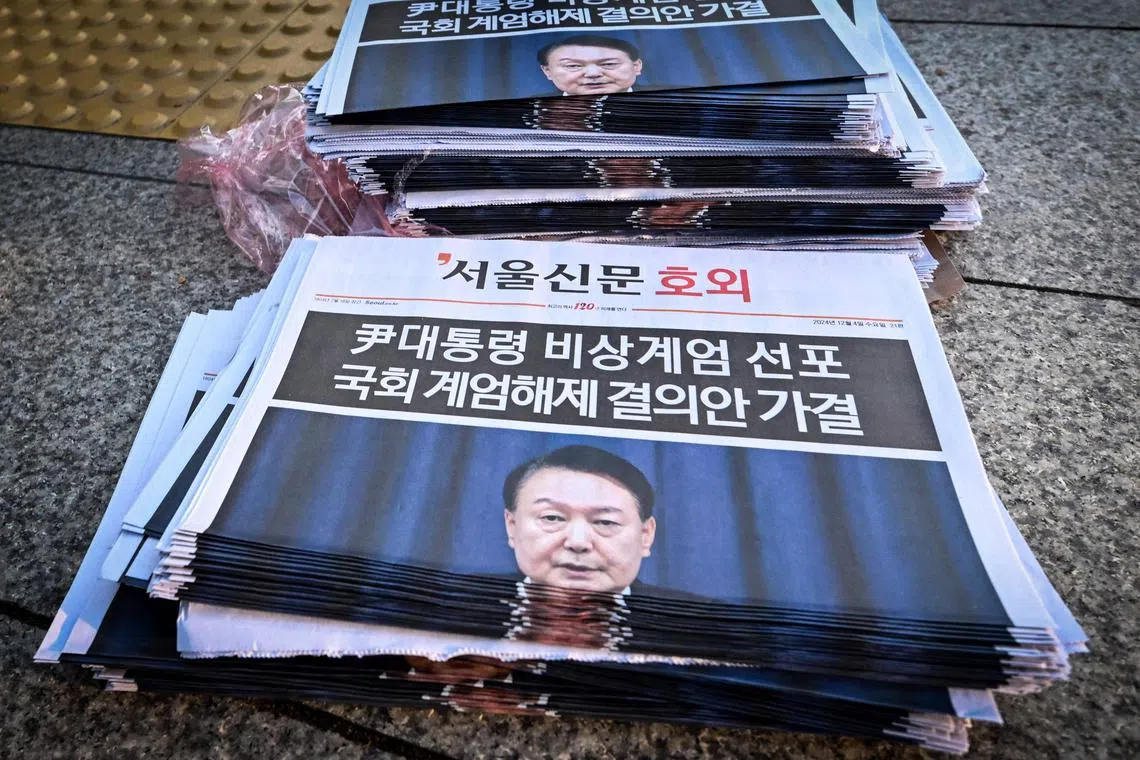How martial law has been used over South Korea’s turbulent history
Sign up now: Get ST's newsletters delivered to your inbox

After South Korea’s Parliament voted to demand the lifting of martial law, President Yoon Suk Yeol said he would comply.
PHOTO: AFP
Follow topic:
It came as a shock both domestically and abroad when Mr Yoon Suk Yeol, the President of South Korea, declared martial law on Dec 3. But the country has a history of martial law and military rule.
In this case, the effort to suspend civilian government proved short-lived. After South Korea’s Parliament voted to demand the lifting of martial law,
Here is a quick primer on the history.
When was martial law last used in South Korea?
Martial law was last introduced on Oct 27, 1979, by then Prime Minister Choi Kyu-hah following the assassination of then President Park Chung-hee, who had seized power in a military coup in 1961.
Under pressure from a group of military leaders led by General Chun Doo-hwan, Mr Choi, by then the president, extended martial law into 1980 and banned political parties, sparking a backlash by pro-democracy forces. Hundreds of people died in a deadly crackdown before martial law was lifted in 1981 following a referendum.
Political parties were again permitted to function and in 1987 other civil rights were restored, producing a period of democracy that had prevailed up until the current president made his martial law declaration in an emergency national address televised live.
When else has martial law been used?
The first declaration of martial law was in 1948, just months after South Korea’s formal establishment, by its first president, Syngman Rhee, who was working with US forces to suppress a communist-led military rebellion. He imposed it again in 1952, during the Korean War. Martial law was deployed on a number of occasions by various regimes over the intervening years as the nation went through a turbulent period marked by military coups.
What is martial law in South Korea?
The president has the authority to declare martial law under the Constitution in circumstances of war, armed conflict or other national emergencies.
South Korea has two types of martial law: emergency martial law and security martial law. The former, invoked by President Yoon, grants the government sweeping powers, restricting the freedom of the press, limiting assembly and overriding civil courts, among other things.
The president must notify the National Assembly after declaring martial law. If the assembly demands its termination by a majority vote, as it did in the most recent case, the president must comply. Bloomberg

